Suggest a new Definition
Proposed definitions will be considered for inclusion in the Economictimes.com
What is 'ATM'
ATM
Standing for Automated Teller Machine, ATM has become an increasingly popular banking outlet to withdraw cash, deposit cheques and check the latest transactions and account balance.
In 1960, a man named Luther Geroge Simijan invented Bankography, a machine that allowed customers to deposit cash and check the transaction. Then the first ATM was set up in 1967 by Barclays Bank in Enfield. James Goodfellow introduced the concept of personal identification number, i.e., PIN, in 1970, marking the growth of self-service banking.
By 1984, the number of ATMs tallied at 100,000 worldwide, and its popularity surged. A large number of ATMs were built worldwide to aid digital payment services.
What is ATM?
Automated Teller Machine, i.e., ATM definition includes being electronic banking outlet which allows customers to complete basic transactions without the aid of any representative from the bank.
Convenience and accessibility are the key benefits of ATMs. Services like deposits, cash withdrawals, transfers between payments and bill payments can be performed by an ATM.
There are primarily two types of ATMs. The basic ATM allows customers to withdraw cash and receive information about updated account balances. The more advanced ATMs allow further complex services like account deposits, facilitating payments, access to account information and line of credit payments.
Did you know atm can be categorized according to the label assigned?
A typical ATM contains the following parts:-
Advanced ATMs have slots to deposit cash and paper checks.
About ATMs
On average, around USD 60 amount of cash is withdrawn per transaction. Usually, users can use their bank ATM without paying any charge. However, users might have to pay a minimum charge if they are using their bank's card in a different bank's ATM. But in most cases, users do not have to pay any extra charge and receive reimbursement if there is no other ATM in the area.
Banks and credit unions own ATMs, but individuals and business establishments can lease or buy ATMs through an ATM franchise. These individuals or business establishments usually charge fees on the machine users.
Working of ATM
Internet service providers play a crucial role in the efficient working of ATMs. It stabilizes the connection between the host processors and the atm. Once a translation is initiated, information is added by the cardholder. These are passed onto the host processors, where authorization is provided upon checking the details. Once the details are verified, host processors send an approval code for the transaction.
ATM cards are strongly secured by encryption through strong software such as Triple data encryption slandered. The automated teller machine has a very simple working principle. A simple terminal with two inputs and four output devices controls digital transaction services.
All parts of the devices are associated with an interfaced processor. If the cardholder wishes to withdraw cash, the processor redeems cash from the cardholder's account. Once the fund is transferred to the host processor's account, an approval code is dispatched, and the required cash is dispensed.
A step-by-step algorithm for operating the ATM is mentioned down below.
What are the benefits of an ATM?
ATM includes features like transferring funds between banks, receiving account balances, changing a pin, depositing cash, withdrawing money and performing a range of other features. ATM makes the process of withdrawing money very hassle-free. One can perform a few services without going to the bank every time.
How to maintain an ATM?
Standard ATM parts should be cleaned, and the machine should be internally inspected to maintain working conditions. Since ATM crime-related cases are on the rise, surveillance cameras installed in the booth should also be checked.
What are some of the disadvantages associated with ATMs?
All bank services cannot be performed at a typical ATM. Machines are prone to damage, and the risk of theft and ATM pin hacks is high.
Disclaimer: This content is authored by an external agency. The views expressed here are that of the respective authors/ entities and do not represent the views of Economic Times (ET). ET does not guarantee, vouch for or endorse any of its contents nor is responsible for them in any manner whatsoever. Please take all steps necessary to ascertain that any information and content provided is correct, updated and verified. ET hereby disclaims any and all warranties, express or implied, relating to the report and any content therein.
Standing for Automated Teller Machine, ATM has become an increasingly popular banking outlet to withdraw cash, deposit cheques and check the latest transactions and account balance.
In 1960, a man named Luther Geroge Simijan invented Bankography, a machine that allowed customers to deposit cash and check the transaction. Then the first ATM was set up in 1967 by Barclays Bank in Enfield. James Goodfellow introduced the concept of personal identification number, i.e., PIN, in 1970, marking the growth of self-service banking.
By 1984, the number of ATMs tallied at 100,000 worldwide, and its popularity surged. A large number of ATMs were built worldwide to aid digital payment services.
What is ATM?
Automated Teller Machine, i.e., ATM definition includes being electronic banking outlet which allows customers to complete basic transactions without the aid of any representative from the bank.
Convenience and accessibility are the key benefits of ATMs. Services like deposits, cash withdrawals, transfers between payments and bill payments can be performed by an ATM.
There are primarily two types of ATMs. The basic ATM allows customers to withdraw cash and receive information about updated account balances. The more advanced ATMs allow further complex services like account deposits, facilitating payments, access to account information and line of credit payments.
Did you know atm can be categorized according to the label assigned?
- Brown label: ATMs operated by a third party apart from bank or credit unions
- Green label: ATMs used for agricultural purposes
- Orange label: used for sharing transactions
- Pink label: ATMs designed specifically for females to avoid long queues and waiting times
- White label: These ATMs are introduced by TATA groups and signify particular entities and not banks own the ATMs
- Yellow label: ATMs used for e-commerce transactions
A typical ATM contains the following parts:-
- Card Reader: This part of the machine reads the chip placed on the front of the card or the magnetic stripe present back of the card inserted.
- Screen: The screen acts as a prompt for the user, guiding them through a service. The screen also shows information and account balance.
- Keypad: Keypad on an ATM is used by the user to enter information like personal information number (PIN) for the transaction and the amount to be involved in the transaction.
- Cash Dispenser: Cash Dispenser is a slot through which bills are dispersed and remains connected to a safe present at the bottom of the ATM.
- Printer: Users can use the printer to print receipts of transactions that have taken place.
Advanced ATMs have slots to deposit cash and paper checks.
About ATMs
On average, around USD 60 amount of cash is withdrawn per transaction. Usually, users can use their bank ATM without paying any charge. However, users might have to pay a minimum charge if they are using their bank's card in a different bank's ATM. But in most cases, users do not have to pay any extra charge and receive reimbursement if there is no other ATM in the area.
Banks and credit unions own ATMs, but individuals and business establishments can lease or buy ATMs through an ATM franchise. These individuals or business establishments usually charge fees on the machine users.
Working of ATM
Internet service providers play a crucial role in the efficient working of ATMs. It stabilizes the connection between the host processors and the atm. Once a translation is initiated, information is added by the cardholder. These are passed onto the host processors, where authorization is provided upon checking the details. Once the details are verified, host processors send an approval code for the transaction.
ATM cards are strongly secured by encryption through strong software such as Triple data encryption slandered. The automated teller machine has a very simple working principle. A simple terminal with two inputs and four output devices controls digital transaction services.
All parts of the devices are associated with an interfaced processor. If the cardholder wishes to withdraw cash, the processor redeems cash from the cardholder's account. Once the fund is transferred to the host processor's account, an approval code is dispatched, and the required cash is dispensed.
A step-by-step algorithm for operating the ATM is mentioned down below.
- Visit the ATM nearest to you and place your ATM card in the cardholder.
- Set your preferred language showcased on the screen with the help of buttons on the side of the screen
- Select the transaction you wish to perform
- Choose the account type for performing the transaction.
- Now enter your PIN through the keypad and the amount you wish to withdraw.
- Wait for a few seconds until the transaction is completed, and then you can collect your amount from the cash dispenser.
- You can collect the receipt you want and move on to any other transaction you wish to perform, or press the exit button and leave.
What are the benefits of an ATM?
ATM includes features like transferring funds between banks, receiving account balances, changing a pin, depositing cash, withdrawing money and performing a range of other features. ATM makes the process of withdrawing money very hassle-free. One can perform a few services without going to the bank every time.
How to maintain an ATM?
Standard ATM parts should be cleaned, and the machine should be internally inspected to maintain working conditions. Since ATM crime-related cases are on the rise, surveillance cameras installed in the booth should also be checked.
What are some of the disadvantages associated with ATMs?
All bank services cannot be performed at a typical ATM. Machines are prone to damage, and the risk of theft and ATM pin hacks is high.
Disclaimer: This content is authored by an external agency. The views expressed here are that of the respective authors/ entities and do not represent the views of Economic Times (ET). ET does not guarantee, vouch for or endorse any of its contents nor is responsible for them in any manner whatsoever. Please take all steps necessary to ascertain that any information and content provided is correct, updated and verified. ET hereby disclaims any and all warranties, express or implied, relating to the report and any content therein.
Related News
 HDFC Bank scheduled downtime: Many HDFC Bank services to be down for almost 14 hours on July 13; full list of services you can, cannot do this SaturdayHDFC Bank scheduled downtime on July 13: HDFC Bank will perform a system upgrade on Saturday, July 13, 2024, to improve the speed and performance of customer banking experiences, increase capacity for high traffic, and enhance overall reliability.
HDFC Bank scheduled downtime: Many HDFC Bank services to be down for almost 14 hours on July 13; full list of services you can, cannot do this SaturdayHDFC Bank scheduled downtime on July 13: HDFC Bank will perform a system upgrade on Saturday, July 13, 2024, to improve the speed and performance of customer banking experiences, increase capacity for high traffic, and enhance overall reliability. AGS Transact looks to widen ATM footprintThe company recently won two orders from State Bank of India to deploy more than 4,000 ATMs over a period of 7 years. "If I consider the SBI contract which we will start deploying in the second half of the fiscal year, we also have a few other banks in the pipeline. So in all we will deploy 3,000 ATMs plus cash recycler machines (CRM)," said Ravi Goyal, chairman, AGS Transact.
AGS Transact looks to widen ATM footprintThe company recently won two orders from State Bank of India to deploy more than 4,000 ATMs over a period of 7 years. "If I consider the SBI contract which we will start deploying in the second half of the fiscal year, we also have a few other banks in the pipeline. So in all we will deploy 3,000 ATMs plus cash recycler machines (CRM)," said Ravi Goyal, chairman, AGS Transact.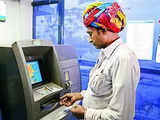 ATM operators seek Rs 2 hike in interchange fee for viabilityThe Confederation of ATM Industry, or CATMI, wants this fee to be raised to a maximum of Rs 23 per transaction to ensure more funding commitment for the business.
ATM operators seek Rs 2 hike in interchange fee for viabilityThe Confederation of ATM Industry, or CATMI, wants this fee to be raised to a maximum of Rs 23 per transaction to ensure more funding commitment for the business. ATM operators seek Rs 2 hike in interchange fee for viabilityThe Confederation of ATM Industry, or CATMI, wants this fee to be raised to a maximum of Rs 23 per transaction to ensure more funding commitment for the business.
ATM operators seek Rs 2 hike in interchange fee for viabilityThe Confederation of ATM Industry, or CATMI, wants this fee to be raised to a maximum of Rs 23 per transaction to ensure more funding commitment for the business.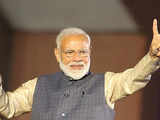 'Aayega To Modi' becomes new ATM strategy for stock investors before election resultInvestors are capitalizing on the "Aayega To Modi" (ATM) strategy, as optimism surges with predictions of Prime Minister Modi's return. Bullish sentiment prevails, backed by favorable fundamentals and technicals, signaling potential gains across various sectors, particularly in infrastructure and manufacturing.
'Aayega To Modi' becomes new ATM strategy for stock investors before election resultInvestors are capitalizing on the "Aayega To Modi" (ATM) strategy, as optimism surges with predictions of Prime Minister Modi's return. Bullish sentiment prevails, backed by favorable fundamentals and technicals, signaling potential gains across various sectors, particularly in infrastructure and manufacturing.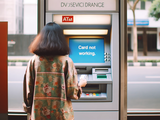 HDFC Bank debit, credit cards will not be working on these two days: Check detailsHDFC Bank has notified customers via email and SMS that all HDFC Bank debit, credit, and prepaid card transactions would be temporarily unavailable during an update period.
HDFC Bank debit, credit cards will not be working on these two days: Check detailsHDFC Bank has notified customers via email and SMS that all HDFC Bank debit, credit, and prepaid card transactions would be temporarily unavailable during an update period.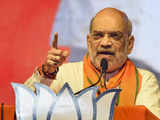 For Congress, Jharkhand is ATM of corruption: Amit ShahUnion Home Minister Amit Shah accused Congress and JMM of using Jharkhand as an "ATM of corruption" during a rally. He criticized the parties for competing in corruption and claimed that PM Modi has tackled Naxals and enhanced tribal budget significantly. Shah was campaigning for BJP's Dumka candidate, Sita Soren.
For Congress, Jharkhand is ATM of corruption: Amit ShahUnion Home Minister Amit Shah accused Congress and JMM of using Jharkhand as an "ATM of corruption" during a rally. He criticized the parties for competing in corruption and claimed that PM Modi has tackled Naxals and enhanced tribal budget significantly. Shah was campaigning for BJP's Dumka candidate, Sita Soren. For Congress, Jharkhand is ATM of corruption: Amit ShahUnion Home Minister Amit Shah accused Congress and JMM of using Jharkhand as an "ATM of corruption" during a rally. He criticized the parties for competing in corruption and claimed that PM Modi has tackled Naxals and enhanced tribal budget significantly. Shah was campaigning for BJP's Dumka candidate, Sita Soren.
For Congress, Jharkhand is ATM of corruption: Amit ShahUnion Home Minister Amit Shah accused Congress and JMM of using Jharkhand as an "ATM of corruption" during a rally. He criticized the parties for competing in corruption and claimed that PM Modi has tackled Naxals and enhanced tribal budget significantly. Shah was campaigning for BJP's Dumka candidate, Sita Soren. HDFC Bank net banking, mobile banking, UPI will be down during this timeHDFC Bank has informed its customers that net banking, mobile banking will not be working on May 25 for a certain period of time. HDFC Bank customers were informed about scheduled maintenance work being done due to which below services would have been impacted
HDFC Bank net banking, mobile banking, UPI will be down during this timeHDFC Bank has informed its customers that net banking, mobile banking will not be working on May 25 for a certain period of time. HDFC Bank customers were informed about scheduled maintenance work being done due to which below services would have been impacted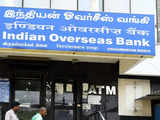 Indian Overseas Bank plans to open 88 new branches in FY24Indian Overseas Bank is set to establish 88 new branches across India in FY24. The bank recently opned a new branch in Nagapattinam and its 126th ATM in Puducherry. Managing Director and CEO Ajay Kumar Srivastava said that the bank's expansion strategy aimed to serve unbanked rural areas with innovative products. The bank's total business has surpassed Rs 5 lakh crore.
Indian Overseas Bank plans to open 88 new branches in FY24Indian Overseas Bank is set to establish 88 new branches across India in FY24. The bank recently opned a new branch in Nagapattinam and its 126th ATM in Puducherry. Managing Director and CEO Ajay Kumar Srivastava said that the bank's expansion strategy aimed to serve unbanked rural areas with innovative products. The bank's total business has surpassed Rs 5 lakh crore.
Load More